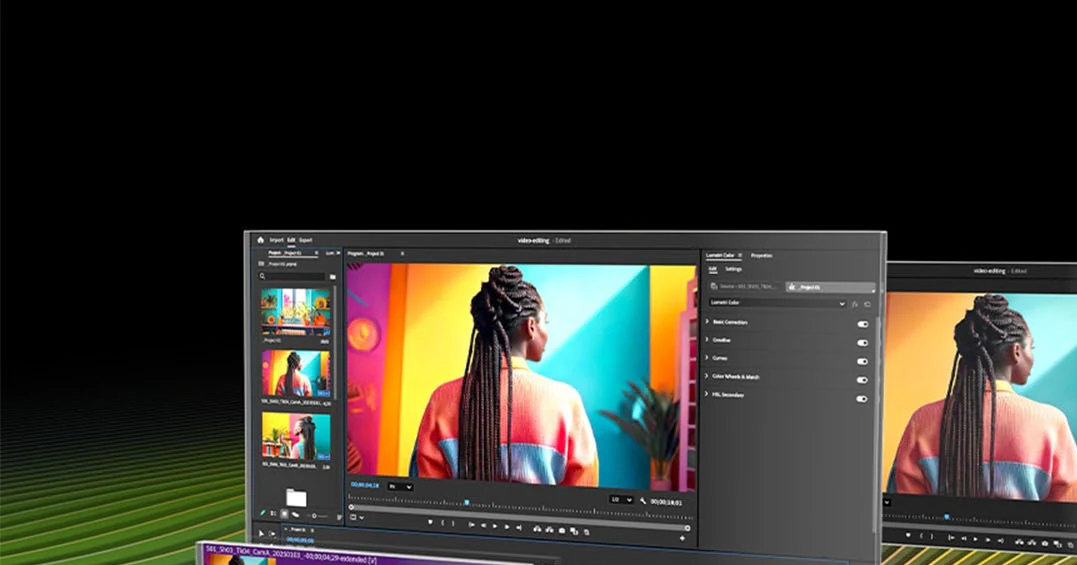![]()
Nvidia unveiled new GeForce RTX 50 Series GPUs for desktop and laptop PCs at CES. Built on Nvidia’s Blackwell architecture, the new GPUs promise significantly improved performance for generative AI tasks alongside advanced hardware encoding for video editing and livestream applications.
Generative AI is undoubtedly a popular buzzword these days, with people using the burgeoning technology to create images, audio assets, and even videos across a wide range of software. However, generative AI is also resource-hungry, which is why tech companies are racing to release new chips with dedicated AI processing onboard.
The Nvidia GeForce RTX 50 series GPUs aim to satisfy growing AI demands through FP4 support, which reduces the memory load of AI tasks and improves support for a growing list of AI models.
“FP4 is a lower quantization method, similar to file compression, that decreases model sizes. Compared with FP16 — the default method that most models feature — FP4 uses less than half of the memory and 50 Series GPUs provide over 2x performance compared to the previous generation,” Nvidia explains.
As for how the new RTX 50 series GPUs can help professional creators, Nvidia says its latest GPUs deliver a “generational leap” for video encoding and decoding. The RTX 50 chips support the 4:2:2 color format often used by professional videographers and include new support for multiview-HEVC for 3D and virtual reality (VR) video and a new AV1 Ultra High-Quality Mode.
Concerning 4:2:2 video, Nvidia says decoding this format is often challenging due to increased file sizes. With dedicated 4:2:2 hardware support, the RTX 50 GPUs can decode up to eight 4K/60p 4:2:2 video sources per decoder, ensuring smooth multi-camera video editing in popular video editing applications.
The GeForce RTX 5090, in particular, features three encoders and two decoders, while the RTX 5090 has two of each. Moving farther down the line, the RTX 5070 Ti has two encoders and one decoder, while the RTX 5070 has one of each. The RTX 5090 can export video up to 60% faster than the RTX 4090, a beast in and of itself, and four times faster than the RTX 3090. The RTX 50 series GPUs also promise double the decode speed for H.264 video.
Nvidia says it is working with Adobe, Blackmagic, Capcut, and Wondershare to ensure that popular video editing apps like Premiere Pro and DaVinci Resolve can take full advantage of the new RTX 50 series GPUs. Nvidia says support should arrive in February.
Although 3D rendering is outside the wheelhouse of most photographers and videographers, it is worth noting that the RTX 5090 GPU has 32GB of GPU memory, the largest of any GeForce RTX GPU ever. This results in a 33% performance improvement for 3D rendering compared to the RTX 4090.
Availability
The Nvidia RTX 5090 and 5080 GPUs will be available starting January 30, while the GeForce RTX 5070 Ti and 5070 will arrive in February. RTX 50 series GPUs for laptops are slated to be released in March. Speaking of which,
the redesigned Razer Blade 16 laptop will feature RTX 50 series GPUs when it releases later this quarter.
Image credits: Nvidia



